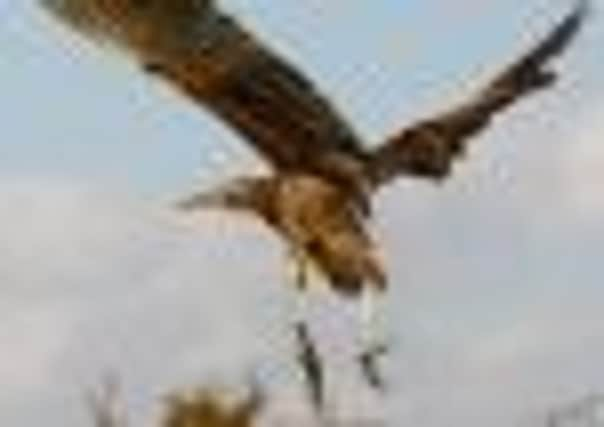Birdwatch: It’s a boom time on the bittern track


Last week it was announced that there were 104 booming male bitterns across England this spring, the highest number since records began.
And in Yorkshire two pairs nested in the Aire Valley, the first in the area for some 200 years, while bitterns are also attempting to re-establish themselves in the Ure Valley.
Advertisement
Hide AdAdvertisement
Hide AdThere were six booming males around the Humber and two nesting attempts. One, at the RSPB’s Blacktoft Sands reserve, failed perhaps due to predation, while the other nest was successful
In the Aire Valley I was one of a number of birdwatchers to hear a booming male and subsequently see a female repeatedly flying to and fro from a nearby reedbed giving all the indications of feeding young.
However, it is impossible to know just how many young were fledged from the two nests although it is thought that one of the pairs attempted to nest once, failed, and then tried again.
This is heartening news for all those who have laboured over the past 20 years to provide the ideal conditions for this elusive reedbed dweller to bring it back from extinction as a breeding bird in this country.
Advertisement
Hide AdAdvertisement
Hide AdIt is also encouraging that this has been achieved in the face of two of the harshest winters for many years during which bitterns, along with other wetland birds, endured prolonged periods during which water courses were frozen. These breeding attempts at inland sites in Yorkshire, along with several others elsewhere, is particularly significant for the long term security of bitterns.
The bittern’s main strongholds were in Norfolk and Suffolk where, after becoming extinct in this country in 1886 they first began to re-establish themselves in 1911. It has been a long process and there were just 11 booming males in England just 15 years ago compared with 33 booming males in Suffolk alone this year.
The problem is that many of these sites are in low lying coastal reedbeds such as the ones at the RSPB’s flagship reserve at Minsmere and there are fears that these are at risk from any rise in sea levels which could result in defences breached during winter storms and large swathes of the bittern’s freshwater habitats lost for good.
A new highly successful bittern stronghold has been created on the Somerset Levels where they began recolonising the restored reedbeds in 2008.This year there were 28 booming males there making it the most important area in the country after Suffolk.
Advertisement
Hide AdAdvertisement
Hide AdCertainly sightings of bitterns throughout Yorkshire should continue to increase, especially during the winter when numbers are swelled by arrivals from the Continent which take up residence at sites such at Potteric Carr, Wintersett reservoir and Fairburn Ings.
Birdwatchers on the RSPB’s cruise from Bridlington at the weekend had a particularly good day with an adult Sabine’s gull, Balearic, sooty and Manx shearwaters, Arctic and great skuas and Arctic and black terns among the birds seen. A wryneck was present in a garden at Boulby, Cleveland and a barred warbler trapped and ringed at Spurn where there was a big movement of 12,650 swallows on Saturday.
Visitors to the reserve should note that the road to the point is closed because part of it has been washed away although access is still possible by cycle or on foot.
Little stints and curlew sandpipers have been reported across the region while a buff-breasted sandpiper was at Thornwick pools, Flamborough. Four wood sandpipers were seen at Hornsea Mere and others at Blacktoft Sands and Swillington Ings.
Advertisement
Hide AdAdvertisement
Hide AdBlack terns have also been seen at several inland sites with two at Fairburn Ings and a juvenile at the North Cave wetland, East Yorkshire.
Other birds seen at Fairburn Ings have included daily sightings of red kites buzzards and peregrine falcons while two garganey, seven little egrets, an osprey, hobby and two red-crested pochard, have also been seen.